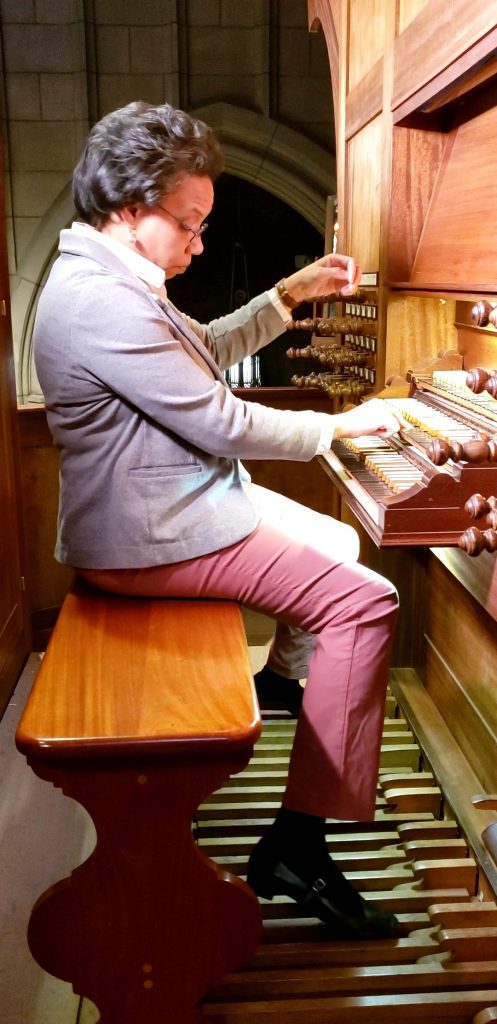by Daniel Hathaway

Those vehicles were delivering renovated parts of several E.M. Skinner organs, to be installed in chambers above the Cathedral chancel, where Trinity’s first instrument had been located when the building was consecrated in 1907.
“We’re very close to hearing some sounds,” Trinity music director Todd Wilson (left, among the pipes) said today in a Zoom conversation. “They’ll be doing rough tuning for several days, then start real voicing.”

After a long process, contracts were signed with Flentrop Orgelbouw in Zaandam, the Netherlands, for two mechanical action instruments in the Dutch 18th-century style — a moveable, two-manual Choir Organ (delivered in 1976 but later sold) and a three-manual Great Organ at the rear of the nave (pictured below, dedicated in December 1977).
The remains of the Skinner were finally removed in advance of the construction of Trinity Commons in 2002, and salvageable pipework was donated to other organ projects.

“People in Richmond fondly remember their 1949 instrument,” Wilson said, “which was played for many years by Raymond Glover, who also served as editor of the Episcopal Church’s Hymnal 1982.” And parishioners of the Church of the Transfiguration, later renamed Emmanuel Church, should be happy to know that part of their Skinner instrument lives on at Trinity Cathedral.
Wilson guesses that tonal finishing will take six weeks, meaning that the refurbished organ should be playable and enjoyable by Easter, “if nothing untoward happens,” he added. “We plan to have it blessed by the Bishop on All Saints’ Day, November 1 — I hope that’s a safe date.”
Architecturally, even though the East chamber of the 1907 organ was turned into a choral rehearsal room and offices in 2002, the space is large enough to accommodate both the new pipework and facilities for the Cathedral musicians.

The new organ will also offer playing aids for performers that the Flentrop has intentionally avoided. “I have become so fond of the Flentrop, and so grateful to it,” Wilson said. “It has made me much more adaptable as an organist. But it will be nice to have combination pistons, swell boxes, and solo sounds for the Evensong repertoire, and fun to have the ability for dueling organs like Memorial Church at Harvard, and First Congregational in Columbus.”


Listen to a WCLV Ideastream interview about the new organ here. We’ll be back with more coverage once the instrument is completely playable.
More photos of the renovation and installation can be viewed on the Muller Company’s Facebook Page.
Published on ClevelandClassical.com February 17, 2021
Click here for a printable copy of this article



